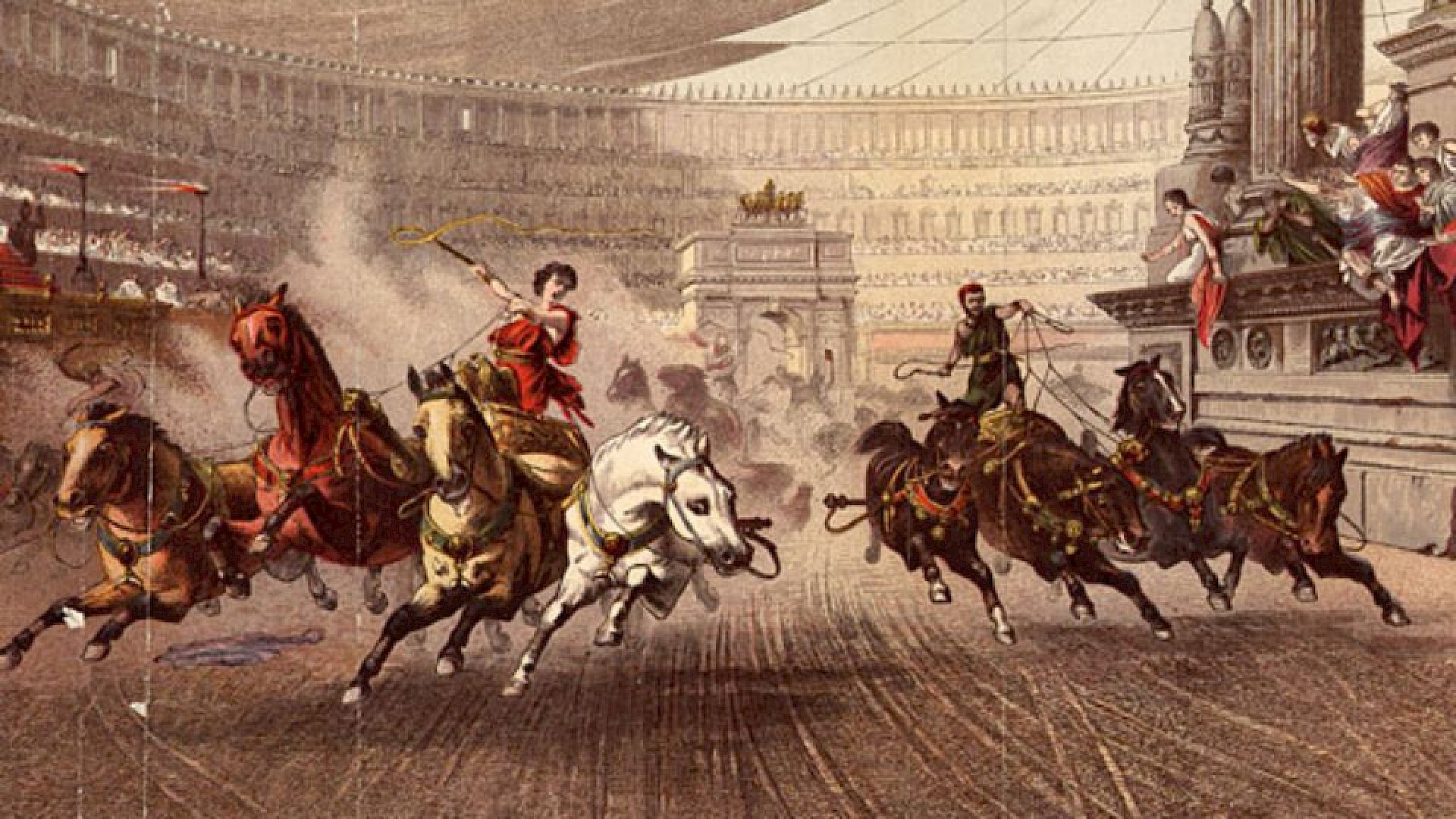

The charioteers would try to 'shipwreck' the leader by whipping their horses into the back of his chariot. As the race neared its end the tactics became more violent. The successful charioteer was not only able to persuade his horses to go fast but was also skilled at impeding his rivals. In his right hand he would carry his whip.
ANCIENT ROME CHARIOT RACES DRIVER
AD 130)īefore the race started the driver would wrap the reins around his waist and then hold them with his left hand. Tomb of a Roman official and his wife showing a chariot race (c. The lead-horse would be named on the racecard, and during the race the crowd would chant the name of this horse, the driver or the faction. The best horses were imported from Africa and Hispania. Horses had to be very brave to run so close to the walls of the spina and the most important horse was the one at the front on the left. However, it was also the most dangerous because if the chariot hit the spina (a long thin island in the middle of the arena) the driver was in danger of being thrown out into the path of the other teams. The best draw was on the rails as it was the shortest way round.
ANCIENT ROME CHARIOT RACES DRIVERS
There were twelve starting-boxes and the drivers would draw lots to decide where they started from. If more than one from each faction was used, the drivers raced as a team rather than as individuals.

Each faction would provide one, two or three chariots for every race. Each lap was marked by the lowering of an egg from a platform. The race was made up of seven laps (8.4 kilometres) and usually lasted about fifteen minutes. On one occasion, Emperor Vitellius, who was a strong supporter of the Blues, had several spectators executed for shouting out rude comments about his team. This rivalry sometimes resulted in fights between spectators. The Romans would support these factions in the same way as people today support rival football teams. These factions were known by the colours that their drivers wore (white, green, blue or red). Four rival groups (Romans called them factions) took part. It is claimed that the Circus Maximus in Rome had room for more than 350,000 spectators.Ĭhariots were usually pulled by four horses but it could be by as few as two or as many as ten.

It was so popular that larger and larger stadiums had to be built.


 0 kommentar(er)
0 kommentar(er)
